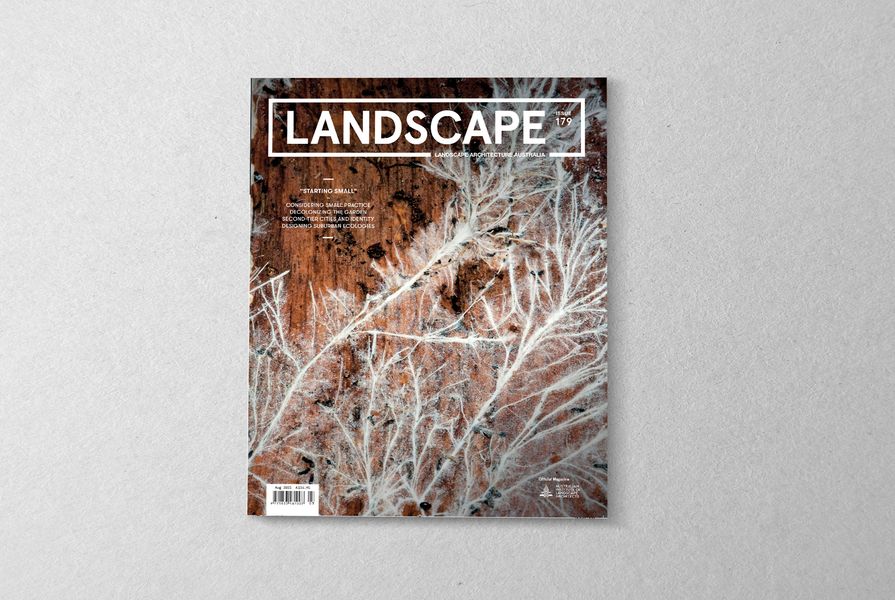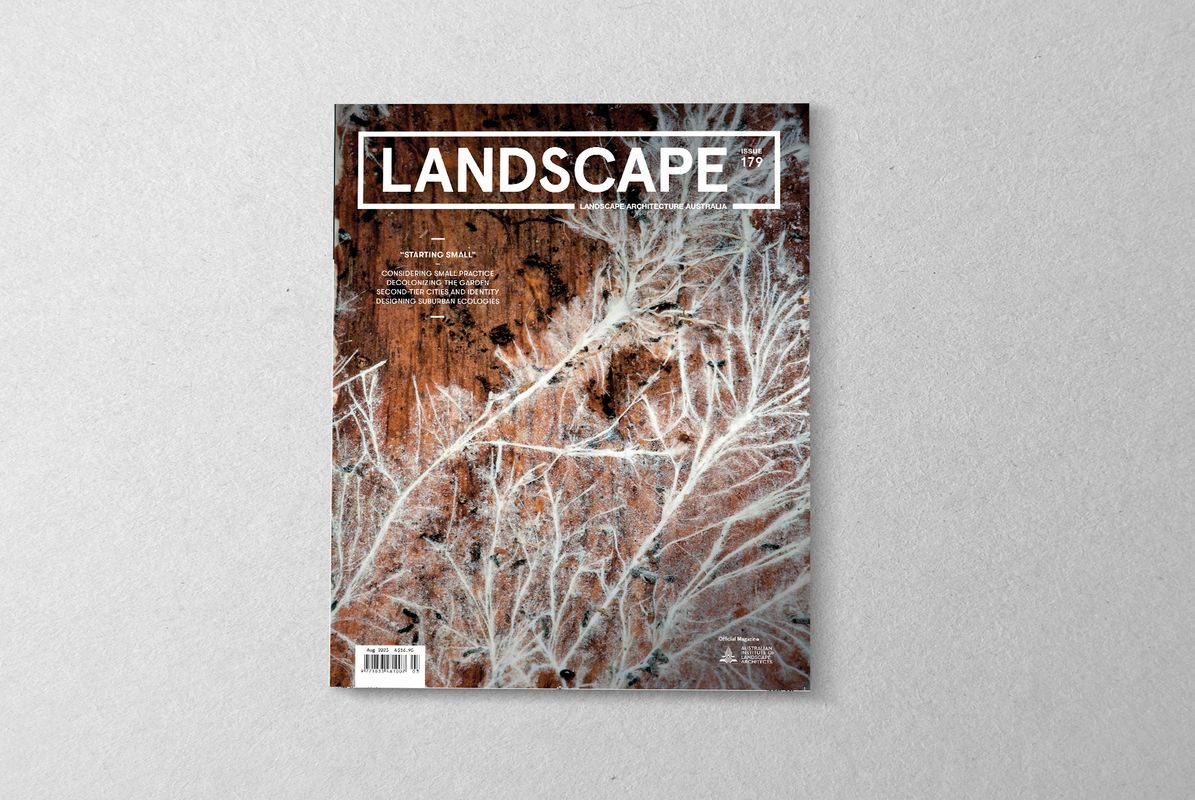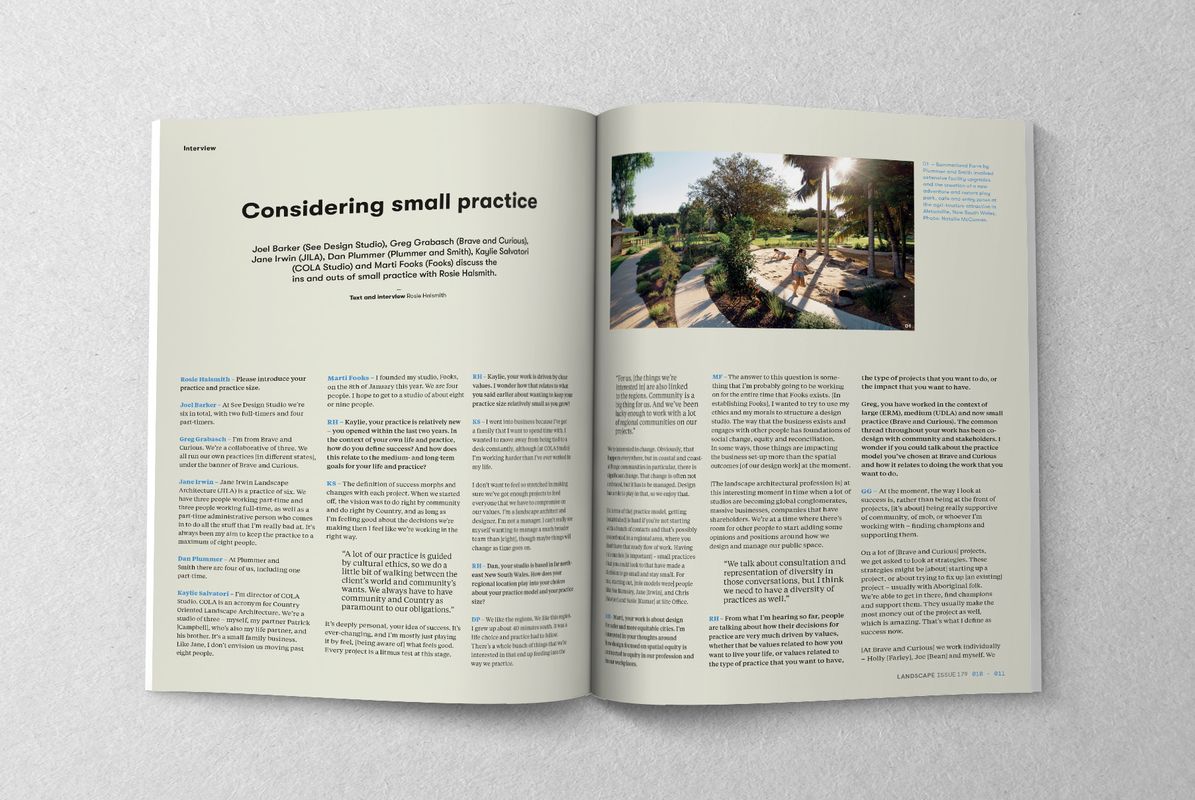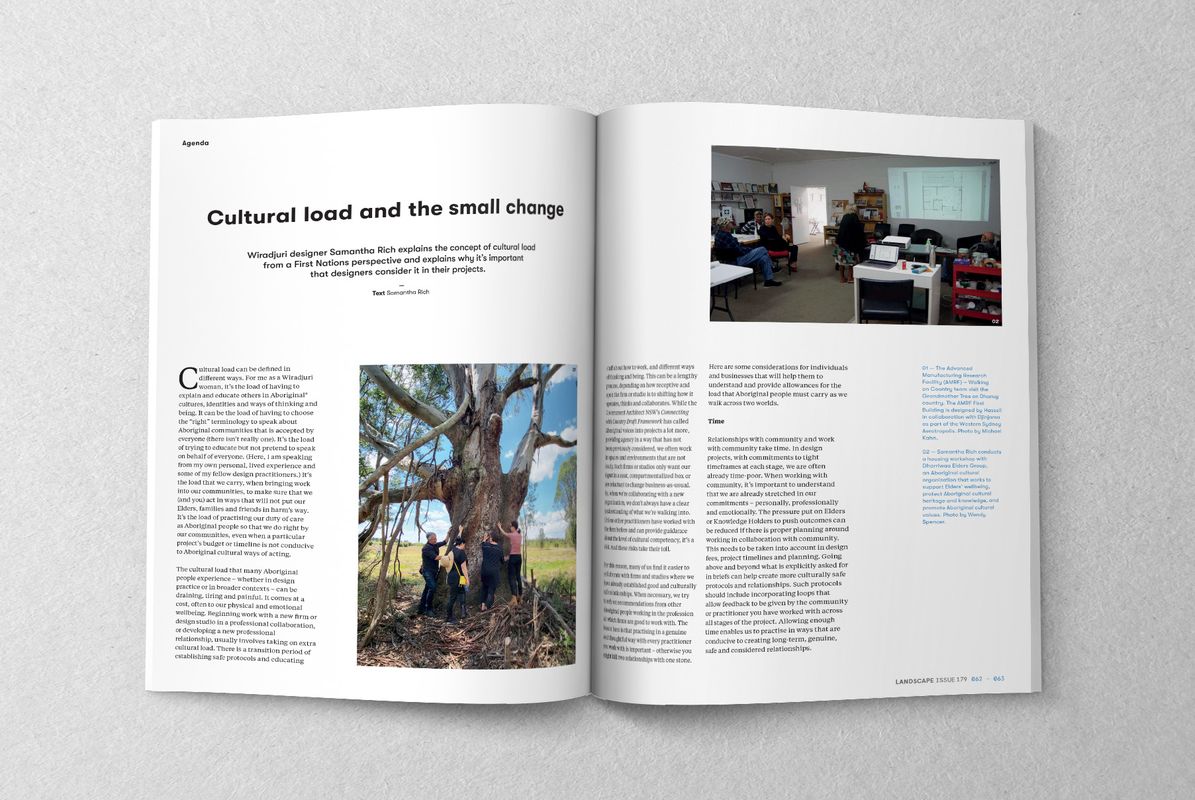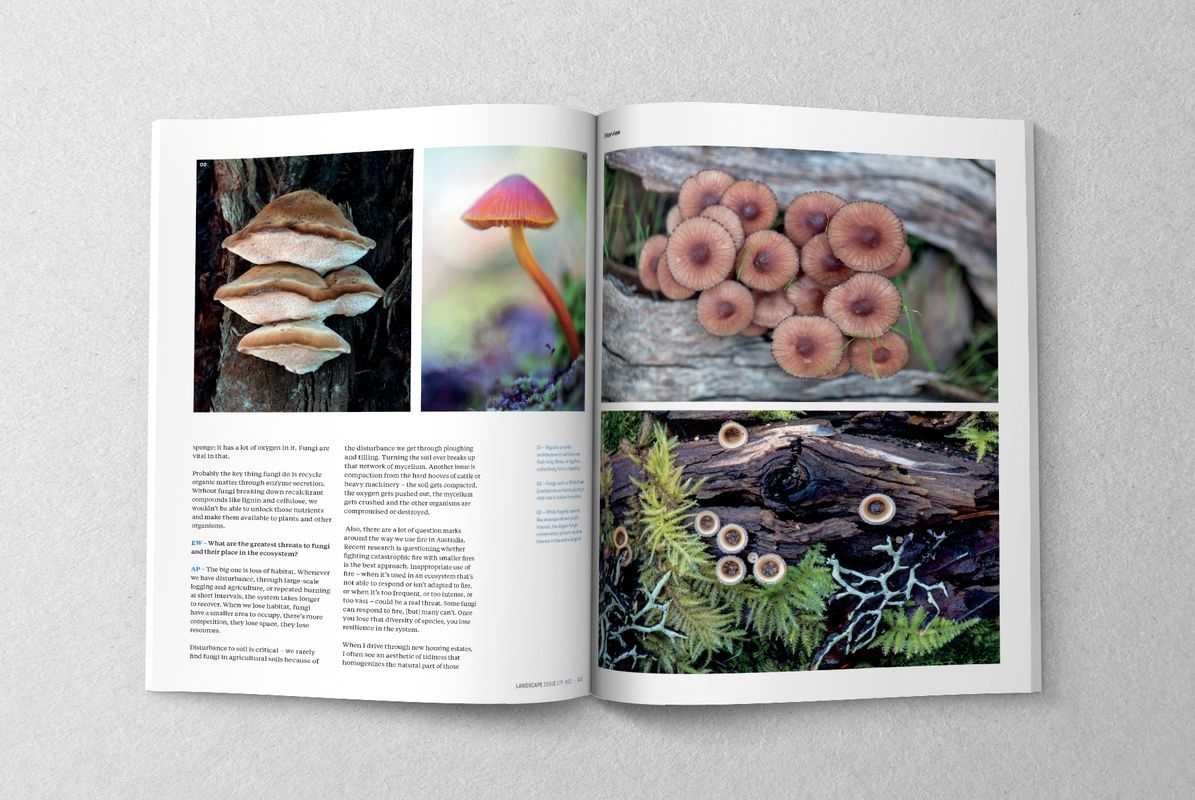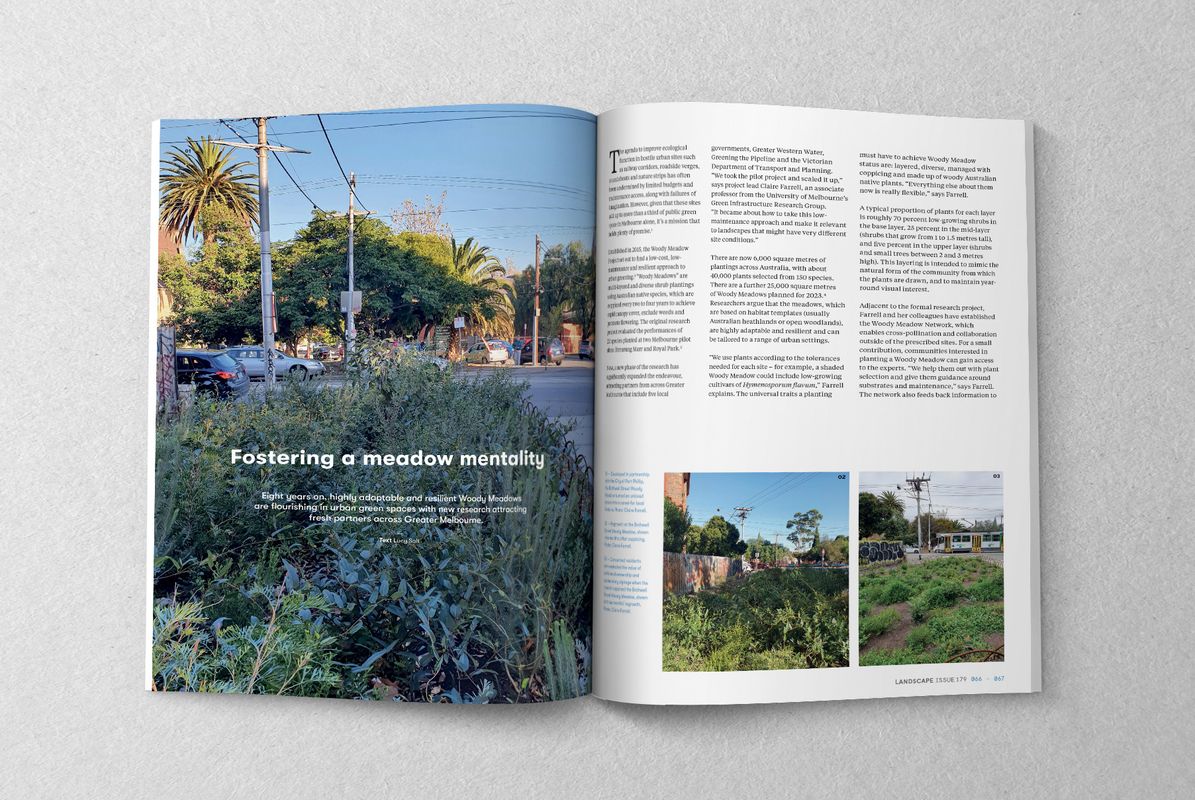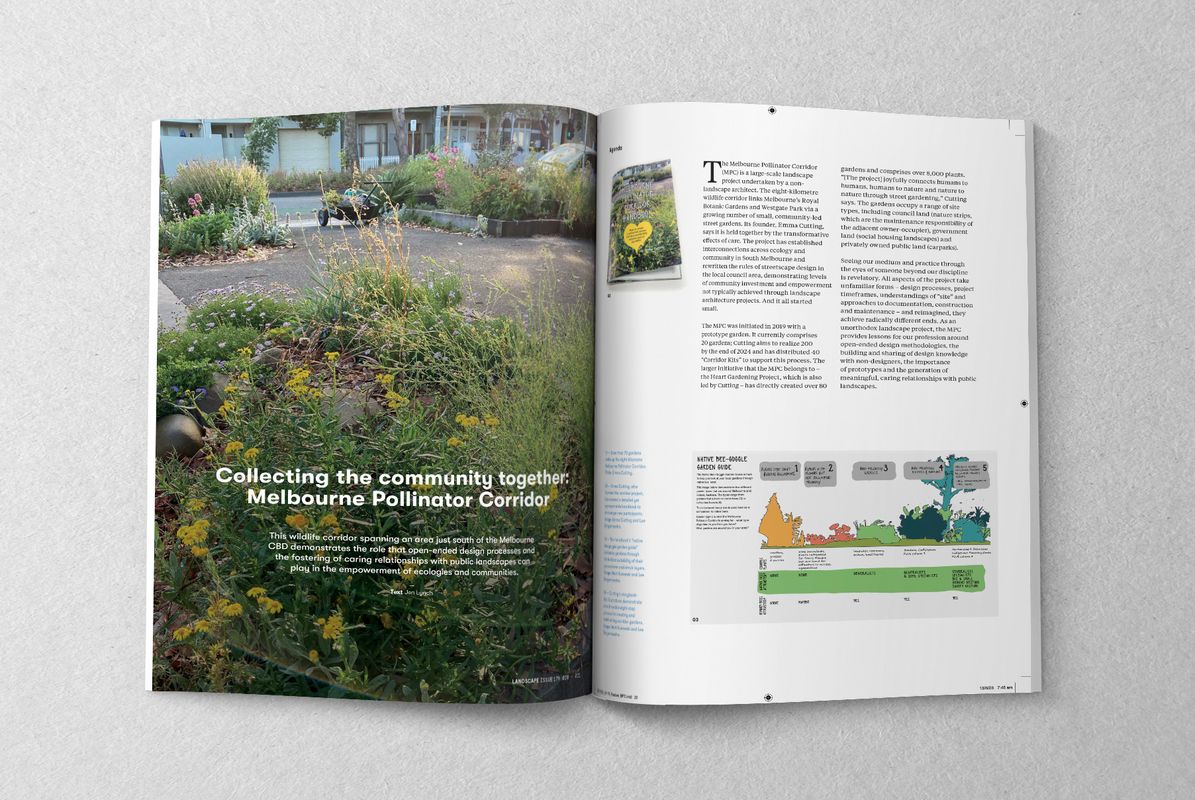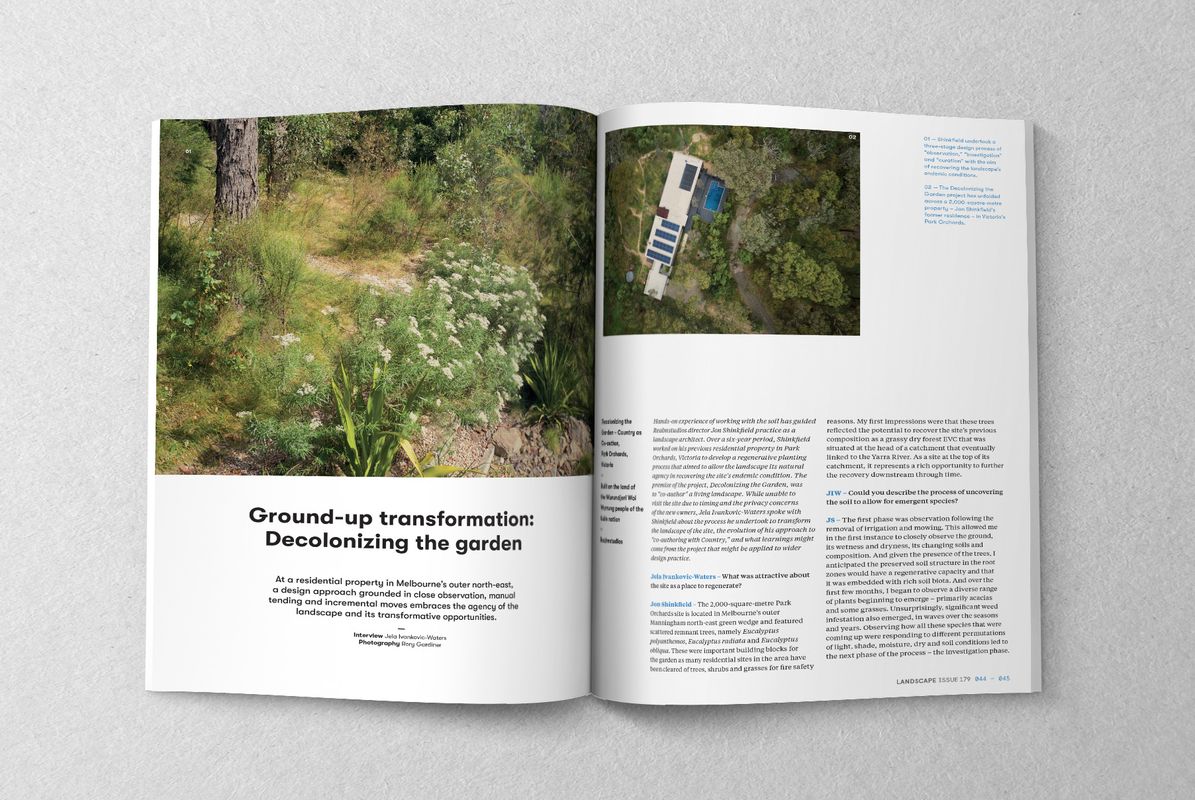This issue of Landscape Architecture Australia shifts away from the large-scale, the well-known and the grandiose aspects of our environments to focus on the smaller, often less visually spectacular elements. Big projects, large moves and expansive sites have a tendency to draw our attention, yet we know that the texture of our cities and surrounds derives largely from the smaller details. We can plan and execute hefty moves, but the way these play out is grounded in the modest gestures and little actions that accumulate to form greater outcomes over time and space.
Arguably, small projects make up most of practising landscape architects’ work in Australia. In this issue, we unpack two design projects: The Roundtable, an installation by Common and Enlocus (page 50); and the evolution of a residential garden by Realmstudios (page 44). The first engages the “small” through adaptive re-use, while the second explores the power of incremental acts over time.
Not only small projects, but small practices make up a notable proportion of the landscape architecture profession. As part of this edition, Rosie Halsmith hosted a roundtable to investigate the various challenges and opportunities of practising small. This conversation with members of emerging and established practices across Australia is captured on page 10.
The micro-scale components that comprise our surroundings (tiny plants, micro-ecologies, the overlooked and the out-of-sight) all have sizeable impacts on ecosystem health and the quality of our daily lives. In an interview with ecologist Alison Pouliot (page 31), we touch on the connection between fungi conservation and landscape restoration. We look at how the design of small suburban courtyards can encourage greater biodiversity (p. 16) and how a focus on small design upgrades can define and elevate the identity of Australia’s smaller cities that are currently experiencing rapid growth (page 56).
At a time when design is focusing on efficient resource use and the integration of life-cycle and metabolic thinking into our processes, it seems an opportune moment to acknowledge the more modest yet highly impactful design that makes up the majority of our built environment. This issue is about the value of reflecting on the small as the foundation for the richness and complexity of our Australian cities and landscapes.
– Emily Wong, editor
In this issue:
-
Viewpoint. A message from AILA National Director Andy Sharp.
-
Considering small practice. Talking the ins and outs of small practice with a diversity of landscape architects. Interview by Rosie Halsmith.
-
Suburban refuge. What small interventions can make a meaningful difference in our suburban ecologies? Article by Alistair Kirkpatrick.
-
Collecting communities together. This pollinator corridor near the Melbourne CBD demonstrates how fostering caring relationships with public landscapes can empower communities. Article by Jen Lynch.
-
Elevating a minor player. Small plants can yield large rewards and nurture wonder in those who cultivate them. Article by Jess Stewart.
- Network connections. Discussing fungi conservation and landscape restoration with ecologist Alison Pouliot. Interview by Emily Wong.
- Small infrastructures: Enabling good habits. Small, considered interventions in places where long networks and local interfaces overlap can greatly improve our cities. Article by Barnaby Bennett.
-
Ground-up transformation. Jon Shinkfield discusses “co-authoring with Country” and the transformation of his former residential property in Park Orchards. Interview by Jela Ivankovic-Waters.
-
An adaptive attitude. A temporary installation in North Melbourne demonstrates the power and potential of the small. Review by Bede Brennan.
-
Regional visions. With Australia’s “second-tier” cities undergoing rapid growth, small-scale projects are vital to defining city-wide identity. Article by Simon Kilbane and Cole Hendrigan.
-
Cultural load and the small change. What changes can designers make to address cultural load in their projects? Article by Samantha Rich.
-
Fostering a meadow mentality. Eight years on from the establishment of the Woody Meadows Project, a new phase of research is expanding the endeavour. Article by Lucy Salt.
- Playful expectations. As our urban neighbourhoods densify, how do we design places where children can thrive? Article by Natalia Krysiak.
Source
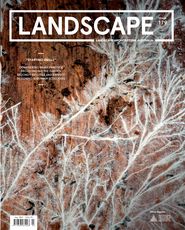
News
Published online: 20 Jul 2023
Words:
Emily Wong
Images:
LAA
Issue
Landscape Architecture Australia, August 2023

